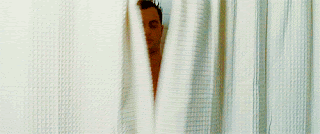Intertextuality is a term to describe the visual referencing between films. Quite literally, film 'borrow' from each other, and you, the audience, may recognise certain camera angles, aspects of mise en scene, snippets of sound or methods of editing in some films that you have seen in others. An example is the famous shower scene from the film Psycho (1960).
This scene has had aspects 'borrowed' from it by other films, such as the following:
What Lies Beneath
What happens?
The man carries the injured woman all the way up to the bathroom. Then runs the shower and puts her in to possibly drown her.
What are the aspects borrowed from Psycho?
The shower curtain (mise en scene), the lady harmed/victimised, the man as the killer, the setting in the white shower (mise en scene), non diegetic sounds similar to Psycho - high notes, and the lighting is sterile.
Fatal Attraction
What happens?
A woman continously stabs another woman, then the man enters the bathroom and drowns the woman.
What are the aspects borrowed from Psycho?
The bloody knife (mise en scene), stabbing actions, screaming female (diegetic sound), the lighting was similar - sterile, setting in the white shower (mise en scene), and the contrast of colouring of the bath and blood.
The Stepfather
What happens?
The man tries to kill the woman in the shower/bathroom, but then the woman ends up killing the man instead.
What are the aspects borrowed from Psycho?
Fast pace music (non diegetic sound), woman screaming (diegetic sound), the knife and shower curtain (mise en scene), the setting of the man dying in the bath (mise en scene), the contrast between the blood and the while bathroom, pulling down the shower curtains, and the lighting of the bathroom - sterile.





No comments:
Post a Comment